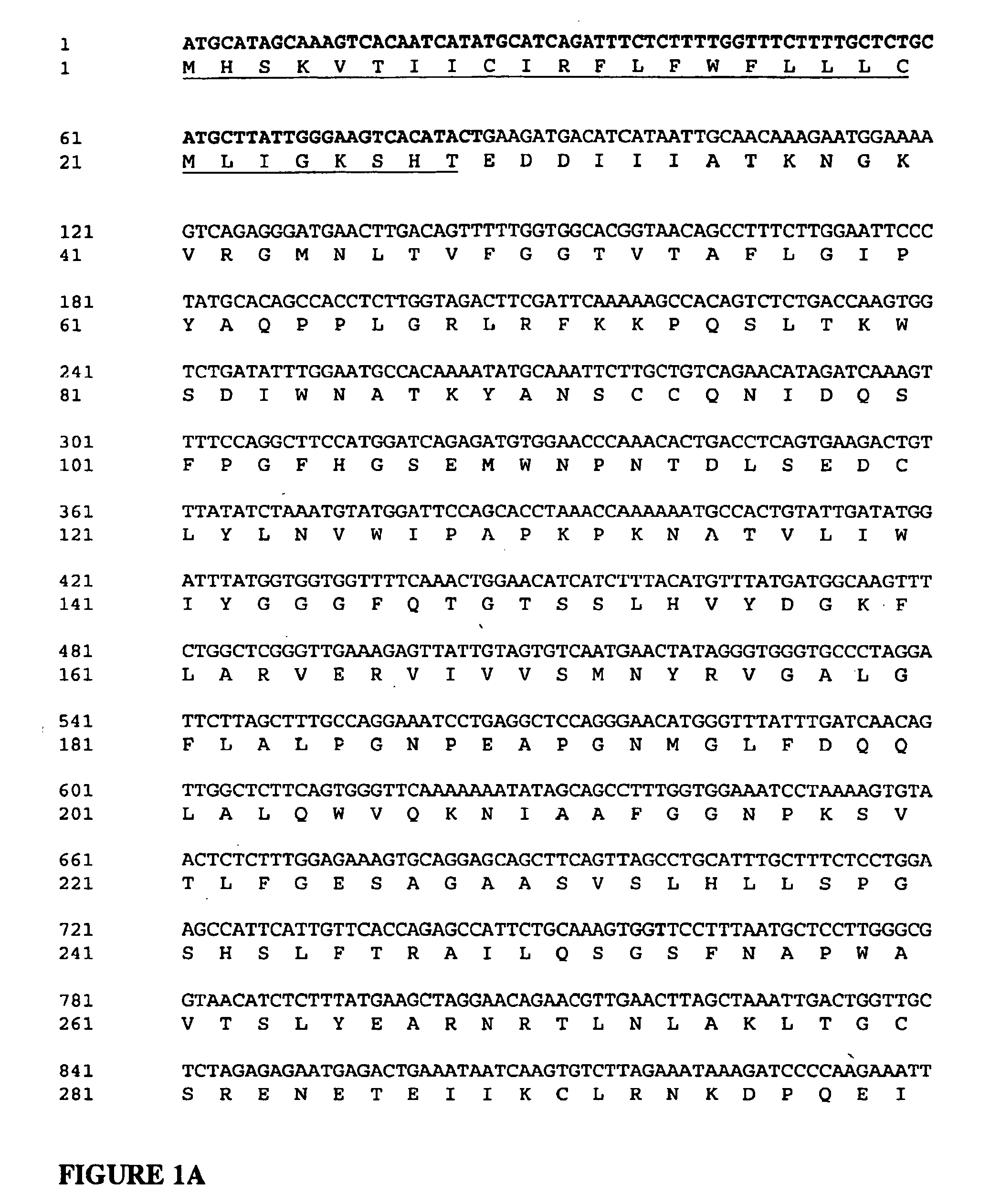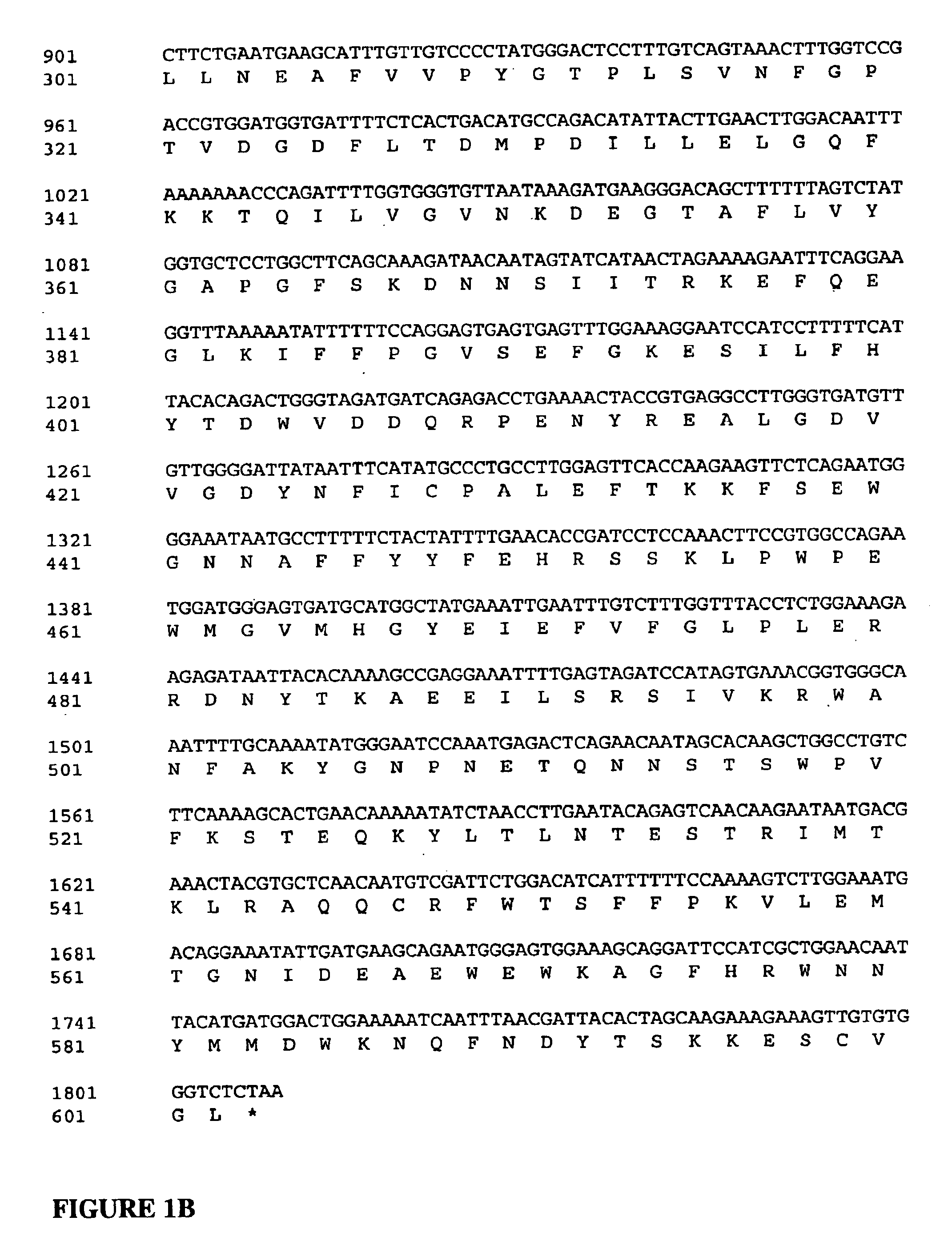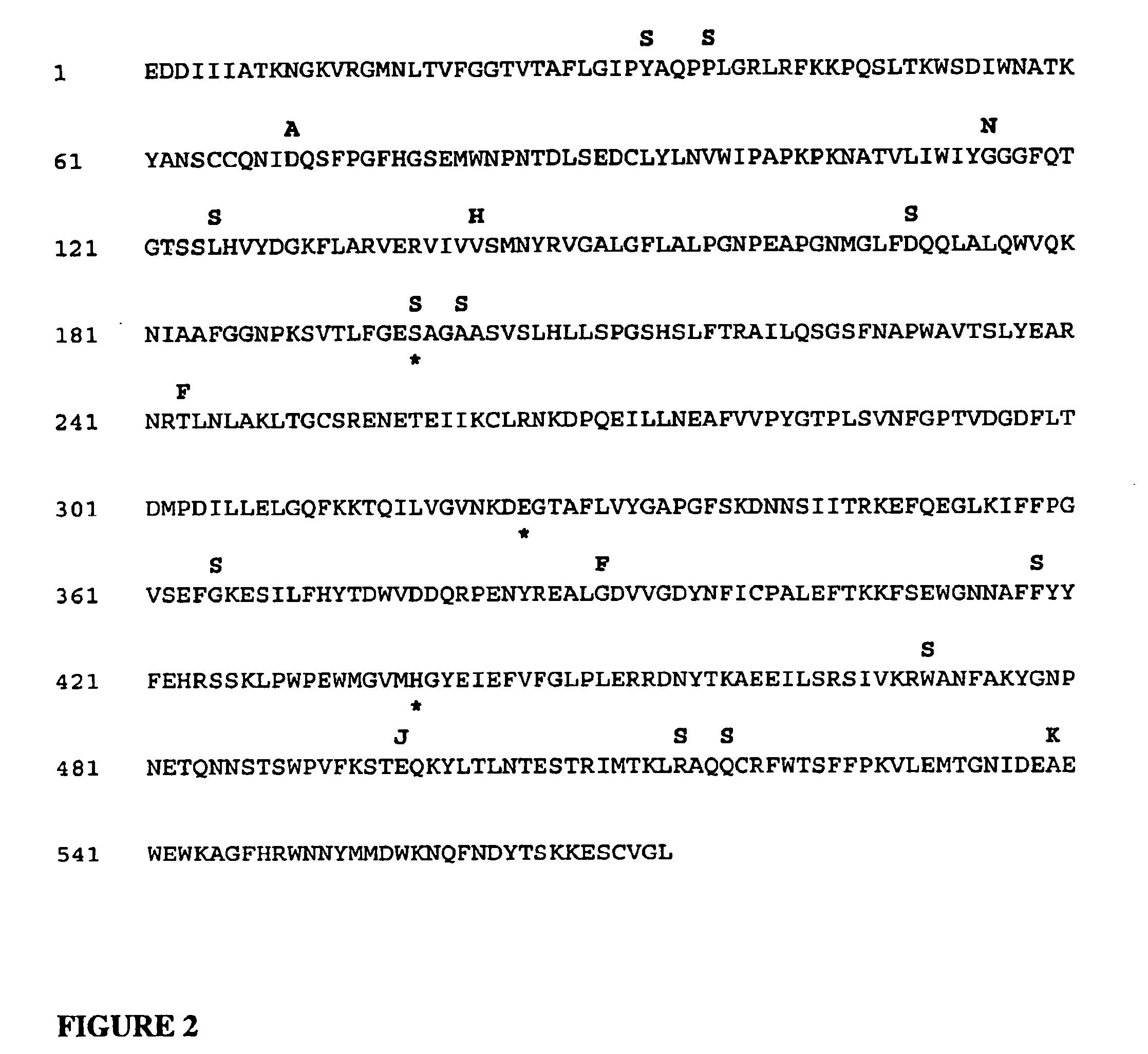Production of hSA-linked butyrylcholinesterases in transgenic mammals
a technology of hsa-linked butyrylcholinesterases and mammals, which is applied in the field of transgenic mammals production of hsa-linked butyrylcholinesterases, can solve the problems of severe poisoning with organophosphate agents, mild symptoms, and inability to produce hsa-linked butyrylcholinesterases, and achieves the effects of promoting independent folding and activity, facilitating the formation of natives, and increasing the mean residence tim
- Summary
- Abstract
- Description
- Claims
- Application Information
AI Technical Summary
Benefits of technology
Problems solved by technology
Method used
Image
Examples
example 1
Production of Recombinant BChE in Cell Culture
1.1 Assembly of Expression Constructs
[0188] Standard recombinant DNA methods employed herein have been described in detail (see, for example, in “Molecular Cloning: A Laboratory Manual.” 2nd Edition. Sambrook, et al. Cold Spring Harbor Laboratory:1989, “A Practical Guide to Molecular Cloning” Perbal: 1984, and “Current Protocols in Molecular Biology” Ausubel, et al., eds. John Wiley & Sons:1989). All DNA cloning manipulations were performed using E. coli STBII competent cells (Canadian Life Science, Burlington, Canada). Restriction and modifying enzymes were purchased from New England BioLabs (Mississauga, ON, Canada). All chemicals used were reagent grade and purchased from Sigma Chemical Co (St. Louis, Mo.), and all solutions were prepared with sterile and nuclease-free WFI water (Hyclone, Tex.). Construct integrity was verified by DNA sequencing analysis provided by McMaster University (Hamilton, ON, Canada). Primers were synthesiz...
example 2
Production of Recombinant Human BChE in Transgenic Mice
Expression Construct pBCNN / BChE
[0212] In this expression construct, the BChE-encoding sequence is under the transcriptional control of a strong β-casein promoter to direct expression of recombinant BChE in the mammary gland, and linked to a β-casein signal sequence to direct secretion of recombinant BChE into milk produced by the mammary gland.
pUC18 / BCNN
[0213] The goat β-casein promoter, including sequences through exon 2, were reverse PCR amplified from a genomic DNA library (SphI restriction digest) generated using goat blood (Clontech Genome Walking Library), using primers ACB582 (5′CAG CTA GTA TTC ATG GAA GGG CAA ATG AGG 3′) (SEQ ID NO: 41) and ACB591 (5′ TAG AGG TCA GGG ATG CTG CTA AAC ATT CTG 3′) (SEQ ID NO: 42). The 6.0 kb product was subcloned into the pUC18 vector (Promega) and designated pUC18 / 5′bCN.
[0214] A 4.5 kb DNA fragment spanning exon 7 and the 3′ end of the goat β-casein gene was reverse PCR amplified fr...
example 3
Production of Recombinant BChE-hSA Fusion Protein in Transgenic Mice
[0238] The methods and protocols used for this example, unless otherwise stated, were the same as those used for Example 2.
3.1. Expression Construct pBCNN / BChE / hSA
pBCNN / wtBChE / hSA
[0239] The vector pBCNN / BChE (see Example 2.1 and FIG. 4) was digested with XhoI to remove the BChE insert, blunt-ended by filling in with Klenow polymerase in the presence of dNTPs, and CIP treated. Construct pCMV / BChE / hSA (See Example 1.1) was partially digested with NcoI to remove the BChE-hSA encoding sequences, blunt-ended by filling in with Klenow polymerase in the presence of dNTPs, and PmeI digested. The two blunt-ended fragments were ligated to generate pBCNN / wtBChE / hSA. In this construct the signal sequence is the BChE signal sequence.
pBCNN / BChE / hSA
[0240] The BstAPI fragment (from 4976 nt to the middle part of BChE) of pBCNN / wtBChE / hSA was replaced with the same BstAPI fragment from pBCNN / BChE (See Example 2.1) to generat...
PUM
| Property | Measurement | Unit |
|---|---|---|
| molecular mass | aaaaa | aaaaa |
| volume | aaaaa | aaaaa |
| volume | aaaaa | aaaaa |
Abstract
Description
Claims
Application Information
 Login to View More
Login to View More - R&D
- Intellectual Property
- Life Sciences
- Materials
- Tech Scout
- Unparalleled Data Quality
- Higher Quality Content
- 60% Fewer Hallucinations
Browse by: Latest US Patents, China's latest patents, Technical Efficacy Thesaurus, Application Domain, Technology Topic, Popular Technical Reports.
© 2025 PatSnap. All rights reserved.Legal|Privacy policy|Modern Slavery Act Transparency Statement|Sitemap|About US| Contact US: help@patsnap.com



